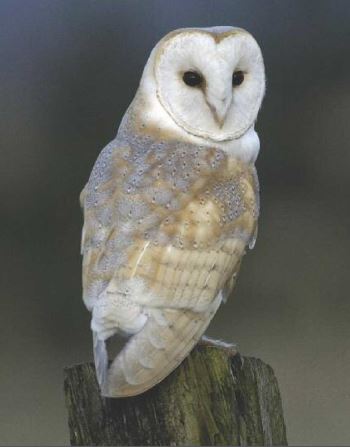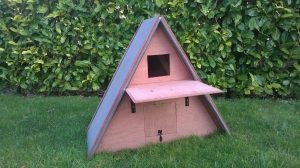The largely untouched landscape of Portrunny and its surrounding areas lends itself greatly to displaying the wide and diverse range of plants and animals of natural Ireland. One tell‐tale sign of the health of this rich ecosystem is the presence of the majestic Barn Owl in our local area. This suggests that from the rodent prey of the owl, right down through the food‐chain to the simplest organisms, Portrunny is one of the few areas in where nature still prevails. To put this into perspective, over the last 40 years, the breeding population of the Barn Owl in Ireland has declined by 39%, resulting in it being categorised as a “Red‐listed Bird of Conservation Concern”.
Unfortunately, the decline in numbers can be largely be put down to the activities of humans, with the use of rodenticides, and the ever‐increasing expansion and speed of our transport networks having a direct effect as well as agricultural practises resulting in fewer suitable nesting spots. Luckily the banks of Lough Ree and the rich boglands around Portrunny provide the rough grassland habitats that enable Barn Owls to thrive alongside the agricultural community here.
Across the world, a similar problem is being observed in Barn Owl populations. One initiative that has proved successful in many places around the globe is providing suitable nesting sites. The lack of such sites seems to be a limiting factor in the growth of the population. In light of the fact that Owls have been spotted in Portrunny, Portrun Development Association have developed an initiative to increase the number of nesting sites in the area in an attempt to increase numbers. This involves the construction of several “nesting boxes” which are attractive to the birds in terms of both structure and location.

The traditional nesting sites of the Barn Owl include holes in large trees as well as in old buildings in areas which are quiet un terms of human activity. This knowledge enabled us to select suitable sites around the Portrunny area in which to place the owl boxes. The boxes needed to be the right size, be waterproof and long‐lasting. Barn Owls mate for life and once a pair becomes established in an area, they tend to remain there for the rest of their lives, so the nesting boxes needed to provide shelter year after year.
This initiative is not only about conservation, but also aims to educate people about this beautiful bird of prey. As such carrying out these tasks was a community effort, from those who researched what the correct size, structure and location of the boxes should be, to one of our local residents who built them, and the Portrun Development Association members who installed them.

The Barn Owl is a nocturnal hunter and as such, they are rarely seen during the day. At night, they come out to hunt for prey which can range from rodents, to bats and even frogs in marshy areas. Although this bird is said to have good eyesight, it is its excellent hearing that it uses to locate its prey. The dish‐shaped face of the owl acts like a satellite to channel and amplify the sounds of its prey moving along the ground.
Our nesting boxes were installed in early winter, just in time for the start of the breeding season. This starts as early as January, where the breeding pair will choose their nest site. Courtship lasts until spring, with the male even bringing food to the female at the nest site. Eggs are laid in April‐May time and the female begins to incubate as soon as the first egg has been laid. She can lay as many as five or six eggs over a two‐week period, so the chicks hatch over a similar period and will be differing sizes. For the next 2 months or more, both parents will carry prey back to the chicks in the nest until they reach their maximum weight and are fully feathered and ready to fend for themselves.

If you are out at dark, you may catch a glimpse of one of these birds gliding through the air, or swooping down to catch its prey. More often than seen, these owls can be heard at night time. The sound of the Barn‐Owl is not the “Hoot” that is often associated with owls but a screech that can be heard from quite a distance. If you spot one of our owl boxes in Portrunny, please admire from a distance only, so as not to disturb any potential occupiers. In terms of what we can all do to play a part in the conservation of Barn Owls in our local area, responsible use of rodenticide poisons is extremely important, with alternative means of rodent control used if at all possible.
Portrun Development Association was delighted to receive funding from Roscommon County Councils Local Agenda 21 ‐ Environment Partnership Fund in support of this initiative.
